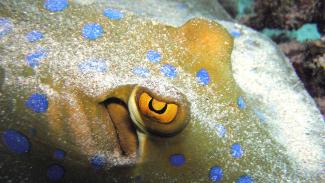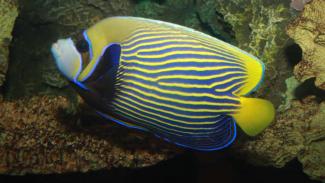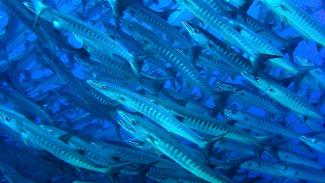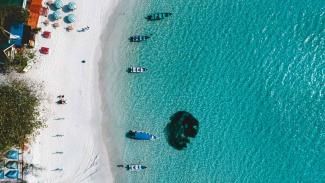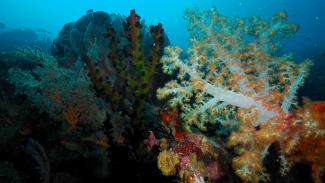Immerse yourself in Coron Bay, Palawan : the finest wreck diving in the Philippines
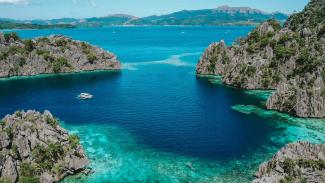
John Hernandez
Coron Bay's diving is all about shipwrecks. Here, a fleet of Japanese warships were sunk in WWII, creating one of the Philippine's most popular and unique diving destinations.
There is more good diving around El Nido, which has great beaches and lovely coral reefs.
Both Coron Bay and El Nido lie off the northern coast of Palawan Island in the western Philippines. It is a region known for its nature and wildlife, with many rare species unique to this part of the world.
Highlights
Best diving spots
During September 1944, an American reconnaissance mission discovered a camouflaged fleet of Japanese warships in Coron Bay, Philippines. They duly attacked, destroying 24 ships and in the process, creating 12 shipwrecks that have become a one of the Philippine's best diving destinations.
Starting from the south, the first wreck is the Irako, a 200m long refrigeration ship that still sits almost upright and is in excellent condition. This huge ship sits in 40m of water & is now home to large Groupers & prides of Lionfish, while Snapper, Barracuda & Batfish hang in the blue. The wreck can be penetrated at deeper depths, but this is only recommended for experienced wreck divers.
Just a little to the north, Kogyu Maru is an easier, more shallow wreck. Descending onto the deck of this 140m ship, you will notice the cargo holds. These holds allow easy penetration and are ideal as an introduction to wreck diving. Heathy schools of fish cover the wreck and Giant Pufferfish are common. In good visibility, this wreck is great for photography. It is sometimes referred to as the Tangat Wreck.
To the west lies Mamiya Maru, another large freighter around 160m long. Unlike the Irako and Kogyu Maru, Mamiya does not stand upright, lying on her starboard side in 34m of water. The exposed port side is now home to numerous sponges, anemones, soft corals & plenty of marine life. On the deck, it is still possible to see the anti-aircraft guns. The cargo holds, which can be penetrated are full of construction materials.
The Olympia Maru to the north also lies on its starboard side. The port side of this 120m long freighter is fairly shallow - around 16m deep and is covered in corals & sponges, including large lettuce corals. The wreck can be penetrated, but is home to numerous Scorpionfish, so care should be taken. To the west is yet another large wreck - the Akitsushima. This 200m long ship is known as a Flying Boat Tender. It was used to winch a smaller, faster boat - the ‘flying boat’ - into the water. This smaller boat has disappeared, but the crane used to winch it into the water is clearly visible. The wreck lies on its starboard side and the large blast hole, which caused the ship to sink almost immediately, is clearly visible. This is a deeper dive and only suitable for experienced divers.
Further to the north is Tae Maru, or Conception Wreck. This was a tanker, around 170m in length. The wreck still sits upright and the deck is in 10 - 15m of water. Maybe due to its exposed location, this wreck has very healthy corals and plentiful marine life. Currents can be strong on this site and the tide should be checked before any dive. The bow of the wreck was destroyed by American bombs and the wreck can be easily penetrated if conditions are good.
Further afield are more large wrecks, such as Black Island Wreck and Kyokuzan Maru, while a few smaller wrecks lie around the area as well.
Coron Bay is not all about shipwrecks and has some excellent coral dives to enjoy. Dibuyan, Dumanpalit and Dimaky islands have excellent reefs, with occasional sightings of Sharks and Manta Rays. For experienced divers, Gunther’s Cathedral is an excellent cave dive. This is not an easy dive and should be done only with an experienced guide and all the necessary safety precautions.
To the south of Coron Bay, situated on the main Palawan Island is El Nido - an area with outstanding natural beauty both above and below the water. These calm waters provide the opportunity for good, year round scuba diving ad are popular with less experienced divers.
The main dive sites are around 3 small offshore islands. Dilumacad Island is famous for its underwater cave, Matinloc Island is the spot to go for pelagic action and Miniloc Island, with its stunning limestone cliffs is home to beautiful coral gardens and many smaller inhabitants. Turtles, Dolphins and even Dugongs can sometimes be seen in the area.
When to dive
Both El Nido and Coron Bay can be dived year-round,. The best time to dive Coron Bay's World War II wrecks are at half moon, avoiding the stronger currents off the full and new moon.
Typhoons can pass through this area of the Philippines in season
Getting there
To reach Coron Bay, you can catch a flight from Manila to Busuanga Island, the largest island in the group. From there, there are regular connections to Coron Island or you can arrange for a transfer to your resort in advance.
Similarly, the best way to reach El Nido is generally by domestic flight from Manila to the local airport, called Lio Airport. It is also possible to take a ferry from Coron or a bus from Puerto Princessa, the capital of Palawan. This is a long bus journey though.
Activities
Away from the wrecks, relaxing or exploring the area are the main activities. There are some interesting treks, or you can explore the area by mountain bike, horseback or boat. Island hopping is very popular too. In Coron Town, there are a few restaurants to choose from but nightlife is generally quiet.
Resort and liveaboard options
There are a limited number of dive resorts in the area, all of which focus on the excellent wreck diving. Many of those are based in Coron Town, but there are also options on more remote islands, such as Sangat Island Dive Resort.
The wrecks are also visited seasonally on liveaboard itineraries that also tend to take in Apo Reef for an enjoyable combination.
We recommend the team at Liveaboard.com to find your Coron liveaboard adventure


